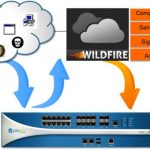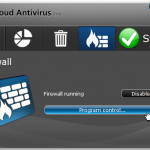2015 -- the year automated malware protection and firewalls become worthless?

Whether you're a home or business user, one thing you've probably had drummed into you for years is the importance of virus protection, an effective firewall and malware guards. Well, as we start our journey into 2015 such security tools may not be anywhere near as effective as they used to be. Is it worth investing in them at all?
The suggestion isn’t that we should ditch firewalls and malware protection altogether -- that would be insanity. But security expert Ilia Kolochenko says that we need to rethink our reliance on automated security tools.
GreatFire.org and BBC punch uncensored news through the Great Firewall of China

The Great Firewall of China is renowned for the restrictions it places on what Chinese citizens can access online. Free speech advocates have long called for the Chinese government to allow access to the wider web, so people in China can get a better idea of what is going on elsewhere in the world. Now GreatFire.org, working with the BBC, has found a way to deliver uncensored Chinese language news to those on the wrong side of the firewall.
GreatFire.org is an anti-censorship group that monitors web blocking in China and campaigns against censorship. Various techniques for getting around the Great Firewall of China have been publicized in the past, but they have relied on VPNs and other tools that can be complicated to set up. The latest method requires no special tools.
Next-gen firewalls need to evolve to avoid becoming irrelevant

When Gartner coined the phrase "next generation firewall", in 2003, it captured a then-nascent approach to traffic classification and control. Combining traditional packet filtering with some application control and IPS layered on top, today's 'legacy' NGFWs do pretty much what they say on the tin.
However, while NGFWs continue to be a vital part of an organization’s protection, they were designed for a time before advanced targeted threats started attacking our enterprises -- threats which often go undetected until it's too late.
Cisco adds threat focus to its firewall platform

The firewall is usually the first line of defense for any network, but most offerings are focused on access policy and application control which makes it hard for them to respond to zero-day and more advanced attacks.
Now networking company Cisco is launching what it calls the first threat-focused Next-Generation Firewall (NGFW). Cisco ASA with FirePOWER Services provides the contextual awareness and dynamic controls needed to automatically assess threats, correlate intelligence, and optimize defenses in order to protect networks.
Emsisoft Internet Security 9 integrates firewall into existing anti-malware protection

Emsisoft GmbH has unveiled its first integrated security suite for Windows in the form of Emsisoft Internet Security 9.0. The suite comprises all the functionality of Emsisoft Anti-Malware, plus the core engine from its Online Armor firewall.
Emsisoft Internet Security promises the same lean and efficient protection as the standalone Anti-Malware tool, while adding in a user-optimised version of its firewall that -- unlike Online Armor -- is designed to be as beginner-friendly as possible.
What’s wrong with my next-generation firewall?

Next-Generation Firewalls (NGFWs) are a foundational component for many traditional network security strategies. While nothing is technically wrong with today's NGFWs, much is wrong with the approach. Most solutions in the market today do exactly as advertised -- combine traditional packet filtering with some application control and rudimentary IPS layered on top. While these capabilities are still important, traditional NGFWs were designed for a more simple time, before advanced threats began burrowing into enterprises through new and innovative means.
Today's sophisticated attacks leverage an array of threat vectors that can take endless form factors. We are now seeing attacks that we couldn't have anticipated just a few years ago. The traditional network security approaches in place to address these challenges have been built from disparate point technologies, amounting to considerable complexity, that create gaps in these defenses that attackers exploit.
Bluhell Firewall: a simple but effective ad-blocker for Firefox

Building the perfect ad-blocker is a complex business, not least because your users can have very different ideas on how it should work.
Some developers try to address this with layer after layer of features. You’ll be able to whitelist this, blacklist that, and add custom filters for just about everything else. Sounds great, until you have to spend an age learning how everything works, and start to notice how all these layers are slowing you down.
Take control of the Windows firewall with Tweaking.com’s 'Allow, Block or Remove'

If you’re currently using the Windows firewall then you’ll know the system can work well: it’s lightweight, configurable, and generally does a good job of blocking incoming attacks. But it’s not always easy to use, and deciding which programs can (or can’t) go online is a particularly tricky process.
Fortunately Tweaking.com’s latest tool, "Allow, Block or Remove", is on hand to help. There are no complex dialogs here, no lengthy lists of rules, protocols, ports or anything else. Instead, just find the executable you’d like to configure in Explorer, and you can block or allow it through the firewall in a couple of clicks.
Comodo unveils new versions of Internet Security, Firewall and Antivirus

Comodo has announced the public availability of Comodo Internet Security 6.2, Firewall 6.2 and Antivirus 6.2. These are more than just maintenance releases, too -- there are some genuinely significant developments.
Right-click the Comodo icon and choose the new Advanced View, for instance, and the rather basic home screen is replaced with something much more detailed. You’ll be able to view details on your antivirus, update, auto-sandbox, HIPS and firewall status, as well as see which processes are using your network bandwidth, view recently detected threats and intrusions, and more.
Check Point releases ZoneAlarm Free Antivirus + Firewall

Check Point Software Technologies has released ZoneAlarm Free AntiVirus + Firewall, the company’s first attempt to make major inroads into the free security suite market.
The core package is exactly what its name suggests: ZoneAlarm’s free firewall, plus a basic antivirus engine licensed from Kaspersky. But there’s also a strong antiphishing module, basic identity theft protection, and 5GB of online backup space available if you need it.
Dell's evolution continues with acquisition of firewall company SonicWall

Dell announced on Tuesday that it will be acquiring firewall and network security management company SonicWall Inc. for an undisclosed sum. Analysts estimate the transaction to be valued at more than a billion dollars.
Dell, which led the consumer personal computer market in the late 90's and early 2000's, is repositioning itself as a systems and solutions provider for government and private enterprise. In February, the company unveiled new storage arrays, virtual network architecture framework, private cloud deployment services, and data warehousing appliances along with a message from founder, chairman, and CEO Michael Dell that Dell "isn't really a PC company."
Comodo Internet Security, Antivirus, Firewall 5.10 released

Comodo Group’s Internet Security, Antivirus and Firewall packages have been upgraded to build 5.10.228257.2253, which is now available for download.
This is a maintenance release, but it’s an important one that addresses some significant issues. If you’re a Windows 7 x64 user, for instance, you might have come across a situation where loading corrupted executables would cause a blue-screen crash: that’s now fixed. And Comodo report that “compatibility with other security suites is improved”, again, specifically for Windows 7 x64 users.
Get more from Windows Firewall with TinyWall

One common view of the Windows Vista/ 7 firewall is that it’s a toy, almost entirely useless, and you should replace it with something more capable just as soon as you possibly can. But this isn’t entirely fair.
Sure, there’s no easy way to, say, restrict outgoing network connections to the applications you specify, but that’s more to do with the firewall’s awkward configuration options than the underlying technology. And these are easy to fix. Install TinyWall and this compact tool will immediately extend the standard Windows Firewall, giving you far easier control over who gets to go online, and who really shouldn’t.
Palo Alto gives firewalls a cloud-based anti-malware sandbox with WildFire

Network security company Palo Alto Networks on Monday introduced a new anti-malware product for on-premises firewalls known as WildFire, which vets new and unknown files in a virtual sandbox to see if they're a new piece of malware, and then creates a distributable signature if they're determined to actually be bad files.
With the WildFire engine in place, a firewall will submit (either manually, or automatically based on policy) new and unknown .EXEs and .DLLs to a virtual cloud-based environment, where they are modeled against 70 different behavioral profiles to determine if they're malware.
Panda Cloud Antivirus makes firewall social

Panda Security has released Panda Cloud Antivirus 1.9.1 Beta, a preview of its forthcoming 2.0 release. The beta sees Panda’s lightweight free cloud-based antivirus tool add firewall protection for the first time.
The new firewall is community based, which means it’s capable of detecting known processes and settings appropriate levels of protection for them without bothering the end user with a pop-up alert. The new firewall is visible from a new tab on the Panda Cloud Antivirus interface.
Recent Headlines
Most Commented Stories
BetaNews, your source for breaking tech news, reviews, and in-depth reporting since 1998.
© 1998-2025 BetaNews, Inc. All Rights Reserved. About Us - Privacy Policy - Cookie Policy - Sitemap.